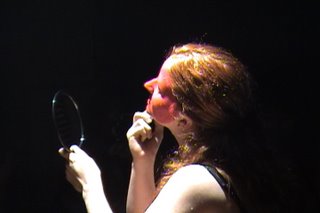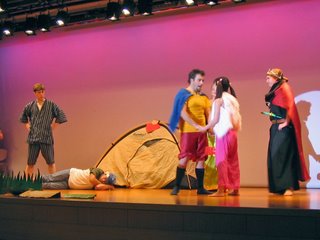This book is based on my Master of Fine Arts (Theatre Studies) thesis, written for the University of Calgary, Canada. I researched in the theme "Creativity and Performance Creation" for my Master of Fine Arts in Theatre Studies degree. My main interest was to examine how creativity would play an important role in the creation process for artists, including performance artists. The following are the questions I explored in my MFA research:
●What is creativity?
●What is a creative process like?
●How can an artist come up with more ideas for the project?
●What is an original idea?
●What is writer's block and why it happens?
●How to prevent or get out of the writer's block?
●There are different learning styles in Japan and Canada. Do they influence on the people's creativeity and originality?
●Besides my scholarly research, I also created an original performance art piece. I recorded my own creative process and examined how I came up with the ideas.
---------------------------------------------------------------------------
Research Methods
1. Learning English—Mainstream Learning in Japanese Schools
2. Learning English—By JET Teachers in Japan
3. Learning to Bake—A Way of Learning in Japan
4. Re-learning English in Japan—In My Own Way
5. Learning to Act in English—Staging a Musical in Japan
2. Learning to Act for a Main Stage Show—At the Grande Prairie Regional College
3. Learning to Dance for a Choreographer—University of Lethbridge
4. Learning to Create my Original Dance and Performance—University of Lethbridge
Mt. Fuji, Passion, and Dedication
---2. Right Brain and Left Brain: Imaginative Mind and Critic Mind
---3. Right Brain and Left Brain: Inventive Mind and Computer Mind
Defining Japanese Art
Objective of the Creative Process Course
II. Incubation/Frustration Stage
III. Inspiration Stage
IV. Verification/Hypothesis Testing Stage
APPENDIX: The Script of Er(l)ection Girl
"I read your book/thesis and I really,really like it !" --- Mireille Merza, from N.Y., U.S.A.
"I really enjoyed your book. It was SO interesting to read about your experience and to think about my own (in reverse!). Your thoughts about the creativity in general were really interesting and your comparison between Japanese and Canadian approaches to artmaking were insightful and extremely informative for me. AND your performance script is witty and a beautiful expression on being "in-between." Thanks for sharing your ideas and personal experiences. " --- Sarah C, from N.Y., U.S.A. (Former JET teacher
"I am learning a lot from you. I can tell that you put so much love, time, and commitment into creating and writing your thesis. It's great." --- Rosary C, from Calgary, CANADA.
"ヨーコさんから直接聞いた話が沢山ちりばめられていて、なんかエッセイ(日本でゆうところの)みたいだと思ったよ。" --- Taeko E, from Yokohama, Japan [Former Fine Arts student at University of Lethbridge, CANADA]
"カルガリー大学大学院の卒業研究として、クリエイティビティを生み出すプロセスと、日本とカナダ及び北米の芸術教育における文化的な差異をテーマに考察を展開した修士論文である。著者は演劇を専攻し、自らも舞台製作を手がけて舞台に立つパフォーマーである。学術論文というと先行研究や参考文献を基にした分析が一般的だが、本作の場合、著者自身の様々な体験が論文の題材として活用されている点が興味深い。しかも、論じられている内容は演劇だけに当てはまるものではなく、人間の創造的活動全般、日本とカナダの社会全体を視野に入れた広がりのあるものとなっていることに注視させられた。 第1章では、自身の生い立ちとカナダに留学するまでの経緯を語ると共に、クリエイティブな活動プロセスを調査するに至ったきっかけを解説、次いで、研究手法を提示して議論の下地作りを行う。 第2章では右脳と左脳の働きの違い、及びクリエイティビティが発揮される際の役割を取り上げていく。右脳の働きで生成されたアイデアが左脳によって洗練したものへと磨かれていくこと、スランプ状態において、単純作業中に不意にアイデアが浮かぶことがあるのは、左脳が作業に集中するため、右脳がその監視から開放される、というプロセスが論じられている。このアイディア生成の過程は、演劇や芸術には留まらず、仕事や学業などの中でも身近に体験できるものといえよう。また、このプロセスは4章でも著者自身の舞台製作体験を通じて実際に検証されており、理論と経験の相補的な関係が、論全体の説得力を高めていたことも評価したい。第3章では、日本とカナダの社会的相違を比較検証し、教授方法や習得方法、クリエイティビティのあり方に対する文化的影響が論じられる。中でも、即興にまつわる理論が非常に興味深い。確立した「型」の習得が重視される日本式の芸術に対し、カナダでは即興というスタイルが一般的である。一見、これらは全く正反対のアプローチのように感じられるが、即興のための反復練習やリハーサルの連続と日本式の模倣練習は、共に独自のスタイルの構築と緊張や自意識からの開放を究極の目的として、その基礎となる身体の自動性を獲得するためのものという指摘は新鮮であった。そして、この理論は更に展開され、練習によって獲得された身体の自動性=自由が、自己に対する自身と信頼を生み、それこそがクリエイティビティの発現には重要であると結論付けられる。文献による社会比較から始まり、歌舞伎や能、ジャズでの即興という事例、その中での異なる二つの教授方法を取り上げ、両者の相違から共通点へと結び付けていく論理展開は鮮やかで、クリエイティビティの源泉の探求には知的な興趣も感じられた。 英語を母国語とする人だけではなく、英語を外国語として読む読者にも、理解しやすい表現と内容である。また最初に述べたように、ここでのクリエイティビティは芸術活動にだけに留まらない。日々の仕事や学業、スポーツの中での試行錯誤にも当てはまり、読者自身の試行錯誤の家庭を客観的に分析する一助にもなるだろう。演劇論の枠を超えた比較文化論と人間の行動論としても示唆に富んでいる。"
---



















